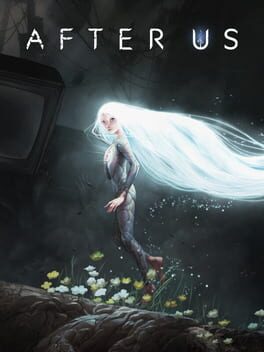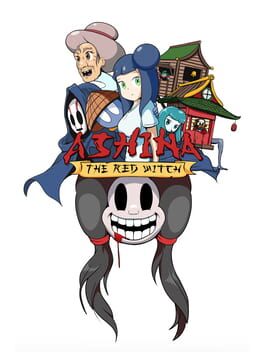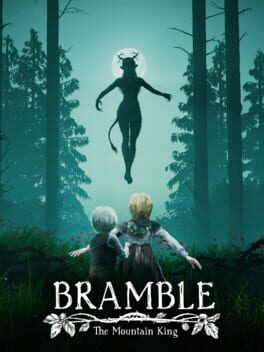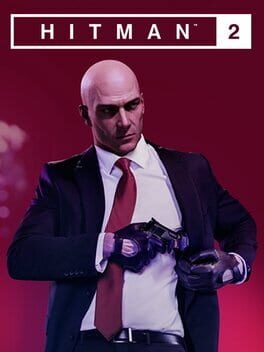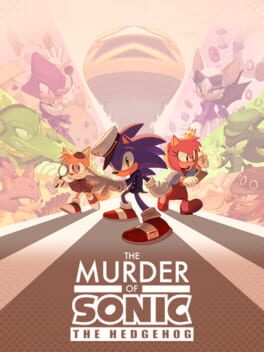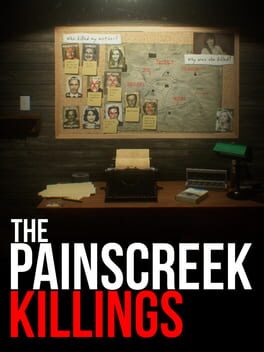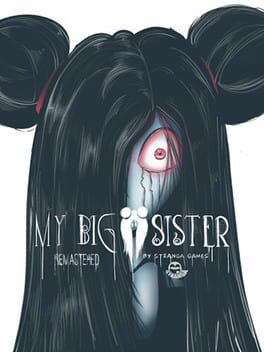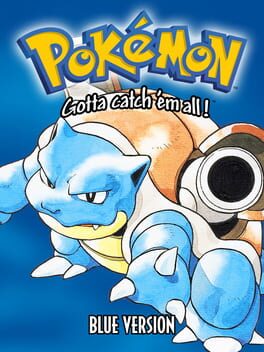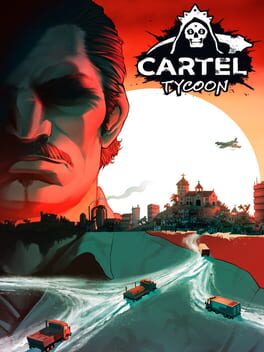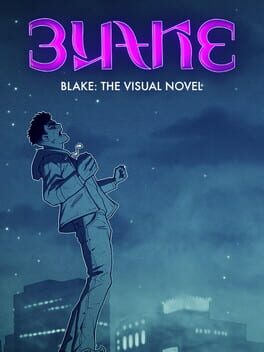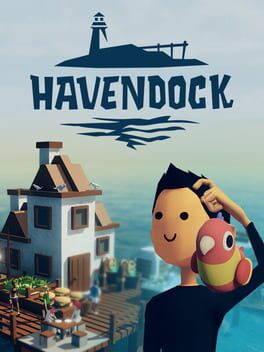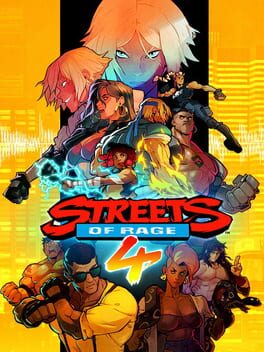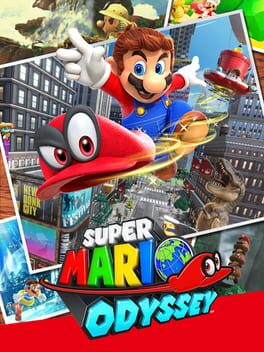Gandheezy22
2023
...I would forgive a lot of these frustrations if After Us was simply fun to play, but it isn’t. At no point did physically playing this game feel good. There are some beautiful landscapes to walk around, and spirit animals are always fun, but everything from the controls to the level design to the structure of the game is badly done. There is obviously some heart behind this, but it feels like a poor execution on every level. I care about our environmental impacts as much as anyone and believe we need to be responsible for how we as a species have created hardship for other species, but I also believe that yelling “you and everything you love are bad” at people does about as much to inspire environmental activism as hitting them over the head with a bag of carrots.
Read my full review here: https://gameluster.com/review-after-us-maddening-mindless-menagerie/
Read my full review here: https://gameluster.com/review-after-us-maddening-mindless-menagerie/
Ashina the Red Witch is the newest adventure title from Stranga Games, sporting fantastic music, fun puzzles, well-made pixel art, and a story that is poignant, heartbreaking, and gripping right up until it isn't. While the narrative, characters, and dialogue were excellent most of the way through, Ashina shoots itself in the foot with the most thematically dissonant and laughably bad ending this side of Game of Thrones.
As I stated before, Ashina is a thrilling and gripping tale for about 90% of the 3 and a half hour runtime. Stranga Games has taken more inspiration from Studio Ghibli’s masterpiece Spirited Away than I’ve perhaps ever seen anything take take, even Ghibli’s own game Ni No Kuni. And to be truthful, it’s all the better for it. Spirited Away is my favorite film of all time, and the second I arrived in the spirit world I started to see the similarities. So yeah, it’s a quick way to my heart, what are you gonna do about it?
Ashina follows the story of Ash, a twenty-something girl exhausted with life, tired of raising her younger sister Tema who is of course always getting into trouble. The two are transported to the spirit world by way of a mischievous spirit named Tanto who has stolen their late mother’s pendant, and after they’re separated Ash sets out to rescue her little sister, just as she always does.
You’ll be taken to several different towns and areas, and the gameplay mostly consists of doing small quests for one NPC in exchange for an item for another NPC to get you to the next thing. It’s all very simple, and most of it is just walking around and talking to the delightful characters. There are a few puzzles scattered about, and they do a great job hitting that medium of not being too tough while offering a challenge and feeling like a natural part of the environment.
Ashina is a very story driven narrative heavy game, so I don’t want to spoil too much more of the story - instead i want to talk about themes. Right up until the end, this story is tied together by the theme of learning to sacrifice for others because it is our responsibility. The characters Ash meets along the way have all given something up, all lost something, for the sake of others. The way to truly love is to sacrifice, to work selflessly. It hits hardest when Ash asks a miner why they keep digging for the coal that powers the city. She responds “why are you trying to rescue your sister?” Ash responds, “because it is my responsibility.”
There is even a part of the story where Ash is offered an escape back to the real world if she agrees to leave her sister behind for dead, after having a meltdown and revealing how much she hates Tema because of what she gave up to take care of her after their mother died. And yet, back into the pit she goes for her sister, her only remaining family. Because to love is to be selfless, stupid, and steadfast.
This story ends with perhaps the most baffling, and contradictory ending I can call to mind. The lesson at the end is that one should, in fact, be selfish. The characters that act for their own selfish purposes are rewarded. The characters that act out of love are punished with death, or worse. It’s not just a matter of evil winning and it being a tragic ending - the theme that the story pushed so heavily is completely invalidated in one fell swoop. The ending makes it clear that to love is to be weak, to sacrifice is to be doomed. Nothing you did in the game matters, actually - it was all stupid. Ash should have gone home and let her sister die.
After becoming so invested in these characters, in what I felt was maybe the best story in a video game this year, I was absolutely gutted by this ending. As I said, it’s not about the tragic nature - it’s about spitting in the face of theme. If you throw away your ending for shock value at the end and tell the player plainly that your story wasn’t worth anything, guess what? They’re gonna feel like they wasted their time. And I do. What was on track to be on my favorite indie games of all time list is now a bad taste in my mouth.
There are alternate endings, but this isn’t the “bad” ending - they’re all relatively like this. It’s also worth noting that Ashina is a prequel to a previous game from Stranga Games, My Big Sister. Ash’s fate was always going to be what it was, since the sequel is already written. For reference, I did skim through a playthrough of My Big Sister to see if it somehow made Ash’s story make sense - it does not. If anything, it’s even worse than I had originally thought.
Overall, there is so much good going on in Ashina: The Red Witch that I would be a fool not to acknowledge. Part of the reason I reacted so badly to this perplexing ending is that I genuinely cared about these characters. Even the ones I hated, I at least cared about them. They made an impression on me. Not to mention the wonderful slew of references and design inspirations from the works of Hayao Miyazaki, the absolute banger soundtrack, and the pleasantly memorable locations and one-off NPCs along the way. The issue, however, is that the writer invalidates everything they did with such a profound lack of self-awareness I feel like I genuinely lost these hours of my life.
Despite its charming art, music, character work, settings, and inspirations, Ashina’s last 30 minutes invalidate the entire story before it and slaps players in the face for being stupid enough to care about it.
As I stated before, Ashina is a thrilling and gripping tale for about 90% of the 3 and a half hour runtime. Stranga Games has taken more inspiration from Studio Ghibli’s masterpiece Spirited Away than I’ve perhaps ever seen anything take take, even Ghibli’s own game Ni No Kuni. And to be truthful, it’s all the better for it. Spirited Away is my favorite film of all time, and the second I arrived in the spirit world I started to see the similarities. So yeah, it’s a quick way to my heart, what are you gonna do about it?
Ashina follows the story of Ash, a twenty-something girl exhausted with life, tired of raising her younger sister Tema who is of course always getting into trouble. The two are transported to the spirit world by way of a mischievous spirit named Tanto who has stolen their late mother’s pendant, and after they’re separated Ash sets out to rescue her little sister, just as she always does.
You’ll be taken to several different towns and areas, and the gameplay mostly consists of doing small quests for one NPC in exchange for an item for another NPC to get you to the next thing. It’s all very simple, and most of it is just walking around and talking to the delightful characters. There are a few puzzles scattered about, and they do a great job hitting that medium of not being too tough while offering a challenge and feeling like a natural part of the environment.
Ashina is a very story driven narrative heavy game, so I don’t want to spoil too much more of the story - instead i want to talk about themes. Right up until the end, this story is tied together by the theme of learning to sacrifice for others because it is our responsibility. The characters Ash meets along the way have all given something up, all lost something, for the sake of others. The way to truly love is to sacrifice, to work selflessly. It hits hardest when Ash asks a miner why they keep digging for the coal that powers the city. She responds “why are you trying to rescue your sister?” Ash responds, “because it is my responsibility.”
There is even a part of the story where Ash is offered an escape back to the real world if she agrees to leave her sister behind for dead, after having a meltdown and revealing how much she hates Tema because of what she gave up to take care of her after their mother died. And yet, back into the pit she goes for her sister, her only remaining family. Because to love is to be selfless, stupid, and steadfast.
This story ends with perhaps the most baffling, and contradictory ending I can call to mind. The lesson at the end is that one should, in fact, be selfish. The characters that act for their own selfish purposes are rewarded. The characters that act out of love are punished with death, or worse. It’s not just a matter of evil winning and it being a tragic ending - the theme that the story pushed so heavily is completely invalidated in one fell swoop. The ending makes it clear that to love is to be weak, to sacrifice is to be doomed. Nothing you did in the game matters, actually - it was all stupid. Ash should have gone home and let her sister die.
After becoming so invested in these characters, in what I felt was maybe the best story in a video game this year, I was absolutely gutted by this ending. As I said, it’s not about the tragic nature - it’s about spitting in the face of theme. If you throw away your ending for shock value at the end and tell the player plainly that your story wasn’t worth anything, guess what? They’re gonna feel like they wasted their time. And I do. What was on track to be on my favorite indie games of all time list is now a bad taste in my mouth.
There are alternate endings, but this isn’t the “bad” ending - they’re all relatively like this. It’s also worth noting that Ashina is a prequel to a previous game from Stranga Games, My Big Sister. Ash’s fate was always going to be what it was, since the sequel is already written. For reference, I did skim through a playthrough of My Big Sister to see if it somehow made Ash’s story make sense - it does not. If anything, it’s even worse than I had originally thought.
Overall, there is so much good going on in Ashina: The Red Witch that I would be a fool not to acknowledge. Part of the reason I reacted so badly to this perplexing ending is that I genuinely cared about these characters. Even the ones I hated, I at least cared about them. They made an impression on me. Not to mention the wonderful slew of references and design inspirations from the works of Hayao Miyazaki, the absolute banger soundtrack, and the pleasantly memorable locations and one-off NPCs along the way. The issue, however, is that the writer invalidates everything they did with such a profound lack of self-awareness I feel like I genuinely lost these hours of my life.
Despite its charming art, music, character work, settings, and inspirations, Ashina’s last 30 minutes invalidate the entire story before it and slaps players in the face for being stupid enough to care about it.
I am so disappointed in this game. I really was hoping for something in the vein of Little Nightmares based on reviews, but this is some of the worst platforming and jankiest controls I've ever felt. The story wasn't compelling, the monsters were largely boring, most of the environments are boring, and your character moves so slowly through huge environments it's tough not to tear out your hair. Also features three of the worst boss fights I can remember experiencing in the last few years. I really liked the art and loved the music, however, which saved the whole thing from being a complete waste of time. Don't recommend.
2018
2023
Ultimately, Meet Your Maker has some great ideas and a great premise that is needlessly over-complicated and hostile to players at nearly every turn. The thing is, I actually had a lot of fun with it when it did work. It was thrilling watching replays of it. Being a free PS Plus game, I heartily encourage you to give Meet Your Maker a try on PlayStation if the idea tickles your fancy. Remember, you will have to both constantly raid and build to play – you can’t just do one or another. There were a lot of times I was really enjoying solving the cobbled-together puzzles other players were creating and seeing what I could manage with the limited toolset. Meet Your Maker is quite fun to play when it’s not actively combating the player. With some truly amazing levels to play and ten times more garbage ones, your mileage certainly will vary.
Full review: https://gameluster.com/review-meet-your-maker-live-cry-repeat/
Full review: https://gameluster.com/review-meet-your-maker-live-cry-repeat/
I reviewed this game with a key provided by the publisher: https://gameluster.com/review-my-big-sister-remastered-narrative-nonsense/
Overall, while the art and world and music are top notch, I can’t really recommend this very narrative heavy game because the story is just a disaster of thematic and tonal clashing at every turn. If this was another kind of game with a heavier combat element or something else to carry the weight, it’d be a different story, but My Big Sister is a narrative. If you are content to just vibe with it for a few hours and let the story be of no consequence, maybe you’ll find a way to enjoy it.
Overall, while the art and world and music are top notch, I can’t really recommend this very narrative heavy game because the story is just a disaster of thematic and tonal clashing at every turn. If this was another kind of game with a heavier combat element or something else to carry the weight, it’d be a different story, but My Big Sister is a narrative. If you are content to just vibe with it for a few hours and let the story be of no consequence, maybe you’ll find a way to enjoy it.
1996
Pokemon Blue was my first video game. I still remember the day I got my Game Boy color with it at just 4 years old. Pokemon opened up the world of gaming to me and will always have a special place in my heart. Shout out to my Blastoise, named Blue, who has long since been lost to time. I barely remember anything else from that long ago, but I will never forget our adventures together.
2021
Overall, I enjoyed my time with Cartel Tycoon, and I may pop back in when I get a hankering for a management game. There are a lot of systems, perhaps a bit too many, but automation is easy enough and the speed at which they’re introduced to you is manageable. I’d like to see some better written characters in the future as well as Spanish VO, and maybe at some point the darker parts of the real cartel life need to be touched on and addressed. It’s a good time, although certainly not relaxing, but if you feel like you’ll enjoy this management sim you probably will. And hey, if there’s a way to explore your city once you build it up, I will most certainly be back.
Full review at https://gameluster.com/review-cartel-tycoon-somehow-i-manage/
Full review at https://gameluster.com/review-cartel-tycoon-somehow-i-manage/
Blake: The Visual Novel is a passion project from solo indie dev Ori Mees that takes us to what I’d call a cyberpunk-noir future - the world and characters capture the feel of cyberpunk without relying much on the aesthetic and hone in on the feeling of being a detective. Regardless, it’s a quick story worth exploring with memorable characters, great comic book- inspired art and absolutely killer music.
Blake has been having strange dreams, but not nearly as strange as his real life has become when he wakes up with a crate of stolen owls from the zoo in his bedroom. With the help of some legitimately enjoyable characters such as Max, Orlo, Lee and Hari, Blake seeks to get to the bottom of everything while uncovering some deeper mystery and finding out about his blood family that he never knew.
Unfortunately , as this is a visual novel and is entirely a story, I can’t say anything further about the plot without spoiling it. What I can talk about is the refreshing nature of providing actual choices to the player that deviates the story greatly. There are a few points particularly where the player makes a choice and branches the story in a totally different direction. There’s also a few mini games peppered throughout that are a good time. There are a good few endings, and it all comes together to give you the feel of a good ole fashioned paperback choose your own adventure novel.
I wasn’t a fan of the ending that I got, as it felt abrupt, but I know there are a few others to unlock which might be more narratively satisfying. I also felt that some of the characters, particularly Jonathan, didn’t really have a believable dialogue back and forth with Blake. In fact, he felt so fake that I was sure he was secretly a villain until the end, as his story just didn’t add up. Blake’s coworkers are delightful though, and I especially loved Hari and was kind of irritated that Blake didn’t enjoy her company. There also wasn’t an option for autoplay, which would be a great accessibility option besides removing the annoyance of constantly tapping Enter. There are a few issues here and there with the writing’s flow and transitions from scene to scene, and yes some of it feels like being jerked between one revelation to the next, but I had a good time with it and the characters are definitely crafted with heart.
I also want to give special props to the soundtrack. It is fantastic and probably the thing that has stuck most with me, giving a perfect flair to both the cyberpunk and noir sensibilities of the visual novel. In fact the ambient music is so pleasing I left the game running on my computer while cooking dinner so I could keep jamming out to it. It fits in with the atmosphere and the story the developer is crafting seamlessly and honestly I’d just buy the soundtrack as a standalone at this point.
Overall, Blake The Visual Novel is a fine entry to a niche genre and I think is worth playing for anybody who already enjoys visual novels. If you are one of the many people that doesnt, however, I do not believe this one will change your mind. I’m a very fast reader and it took me about an hour and a half to finish, and I think the average time is around 2 hours so it’s not gonna take up too much of your time. I think if I could give any award to Blake: The Visual Novel, it would be for most directed vibes. The city of new stone is cool, interesting, and I advise anyone who is even a tad interested to give it a run.
This charming choice-driven visual novel is chock full of vibes, and with some stellar music and great characters, fans of the genre shouldn’t skip this one.
Blake has been having strange dreams, but not nearly as strange as his real life has become when he wakes up with a crate of stolen owls from the zoo in his bedroom. With the help of some legitimately enjoyable characters such as Max, Orlo, Lee and Hari, Blake seeks to get to the bottom of everything while uncovering some deeper mystery and finding out about his blood family that he never knew.
Unfortunately , as this is a visual novel and is entirely a story, I can’t say anything further about the plot without spoiling it. What I can talk about is the refreshing nature of providing actual choices to the player that deviates the story greatly. There are a few points particularly where the player makes a choice and branches the story in a totally different direction. There’s also a few mini games peppered throughout that are a good time. There are a good few endings, and it all comes together to give you the feel of a good ole fashioned paperback choose your own adventure novel.
I wasn’t a fan of the ending that I got, as it felt abrupt, but I know there are a few others to unlock which might be more narratively satisfying. I also felt that some of the characters, particularly Jonathan, didn’t really have a believable dialogue back and forth with Blake. In fact, he felt so fake that I was sure he was secretly a villain until the end, as his story just didn’t add up. Blake’s coworkers are delightful though, and I especially loved Hari and was kind of irritated that Blake didn’t enjoy her company. There also wasn’t an option for autoplay, which would be a great accessibility option besides removing the annoyance of constantly tapping Enter. There are a few issues here and there with the writing’s flow and transitions from scene to scene, and yes some of it feels like being jerked between one revelation to the next, but I had a good time with it and the characters are definitely crafted with heart.
I also want to give special props to the soundtrack. It is fantastic and probably the thing that has stuck most with me, giving a perfect flair to both the cyberpunk and noir sensibilities of the visual novel. In fact the ambient music is so pleasing I left the game running on my computer while cooking dinner so I could keep jamming out to it. It fits in with the atmosphere and the story the developer is crafting seamlessly and honestly I’d just buy the soundtrack as a standalone at this point.
Overall, Blake The Visual Novel is a fine entry to a niche genre and I think is worth playing for anybody who already enjoys visual novels. If you are one of the many people that doesnt, however, I do not believe this one will change your mind. I’m a very fast reader and it took me about an hour and a half to finish, and I think the average time is around 2 hours so it’s not gonna take up too much of your time. I think if I could give any award to Blake: The Visual Novel, it would be for most directed vibes. The city of new stone is cool, interesting, and I advise anyone who is even a tad interested to give it a run.
This charming choice-driven visual novel is chock full of vibes, and with some stellar music and great characters, fans of the genre shouldn’t skip this one.
2023
2020
2017
It is no overstatement to suggest that Mario has defined and elevated the industry to new heights during the last 30 years with unparalleled endurance. Super Mario 64 was the first game to get a 3D camera right, and placed so much importance on it that the camera is an actual character in the game. Super Mario Sunshine, my personal favorite, gave Mario a set of tools far beyond the jumping we had grown used to for so many years. Super Mario Galaxy was the most innovative platformer of its time, taking full advantage of gravity and perspective to enhance the gameplay. Super Mario 3D World brought co-op to the mainline games and proved that pure, old school platforming in 3D was still fun. Even so, Super Mario Odyssey is something special. Previous Mario titles have continually redefined 3D platformers, but Super Mario Odyssey has perfected them.
When Mario finds out that Bowser has kidnapped Princess Peach and arranged a wedding, he sets out on a quest to track down the King Koopa and stop this most unholy of matrimonies. He teams up with Cappy, the magical hat demon, and they set off to rescue both Princess Peach and Cappy’s sister, Tiara.
Cappy at first seems like a simple mechanic. At first glance it appears that Mario can throw the hat at enemies and defeat them. Cappy has so much more to offer though, that is perhaps not on display just from the ads. He can be tossed directly upwards, in a rolling motion along the ground, in an ascending spiral around Mario, or even in a vertical circle from the air. He can be tossed and held in place in to create a platform, or if you’re looking for the advanced stuff he can utilize the dash jump to extend Mario’s jump length tenfold. Cappy’s wide swath of abilities provide the player freedom to try and play however they’d like.
Cappy’s main ability is possession — throwing him onto enemies and objects around the world let’s Mario take control of them. Every one of Mario’s age old enemies, from Goombas to Koopas to Chain-Chomps, is controllable in this game. You can finally be the Bullet Bill you always wanted to be! Cappy additionally can be played by a second player, and working together on a co-op experience in a sandbox Mario game is a dream come true. Don’t expect the co-op to make the game easier, though.
The game so cleverly sets up puzzles in its sandbox world to be solved by utilizing the abilities of some foe while not making it obvious. Children can play this game with a little help, but some of the puzzles can stump even adults. The puzzles and environment tie in so closely with the possession mechanics, yet maintain an air or nonchalance; there are often more clever ways to make it past obstacles than the game would have you think.
Super Mario Odyssey’s theme of world travel is never forgotten or thrown to the wayside. Travel to Mexico, New York City, an underwater kingdom, the deep forest, the moon, the second moon, and even a world a little too similar to Dark Souls. I don’t want to spoil the adventure for you, but the 16+ worlds, some larger even than their Super Mario 64 predecessors, have nothing to offer but beauty, excitement, variety, and an impossible number of challenges.
That brings me to the Moons, the objects you’ll be collecting to power your ship, the Odyssey, and chase down Bowser. First I’ll commend the cleverness of choosing Moons — after all, this is the spiritual successor to Super Mario 64 (in which you collected stars) and Super Mario Sunshine (where you collected suns). Moons are much more plentiful than either of those, and over a hundred can be found in each of the larger worlds. The challenge difficulty of obtaining a moon can be anywhere on a scale of Animal Crossing to Bloodborne, so you’ll always feel that you’re both working towards something and earning something along the way.
Super Mario Odyssey has built on the backs of its predecessors to create an unparalleled 3D platforming experience. The pacing of collecting moons, variety of worlds, Cappy’s distinct platforming abilities, and general attention to fun make Super Mario Odyssey the best 3D platformer ever created. Cappy feels like a natural companion to Mario and I weep at the thought of setting sail on the next adventure without him. Nintendo has proven once again that concentrating on pure, unadulterated fun is what makes Mario games so perpetually strong. No bells, no whistles, just smiles on faces of every age.
When Mario finds out that Bowser has kidnapped Princess Peach and arranged a wedding, he sets out on a quest to track down the King Koopa and stop this most unholy of matrimonies. He teams up with Cappy, the magical hat demon, and they set off to rescue both Princess Peach and Cappy’s sister, Tiara.
Cappy at first seems like a simple mechanic. At first glance it appears that Mario can throw the hat at enemies and defeat them. Cappy has so much more to offer though, that is perhaps not on display just from the ads. He can be tossed directly upwards, in a rolling motion along the ground, in an ascending spiral around Mario, or even in a vertical circle from the air. He can be tossed and held in place in to create a platform, or if you’re looking for the advanced stuff he can utilize the dash jump to extend Mario’s jump length tenfold. Cappy’s wide swath of abilities provide the player freedom to try and play however they’d like.
Cappy’s main ability is possession — throwing him onto enemies and objects around the world let’s Mario take control of them. Every one of Mario’s age old enemies, from Goombas to Koopas to Chain-Chomps, is controllable in this game. You can finally be the Bullet Bill you always wanted to be! Cappy additionally can be played by a second player, and working together on a co-op experience in a sandbox Mario game is a dream come true. Don’t expect the co-op to make the game easier, though.
The game so cleverly sets up puzzles in its sandbox world to be solved by utilizing the abilities of some foe while not making it obvious. Children can play this game with a little help, but some of the puzzles can stump even adults. The puzzles and environment tie in so closely with the possession mechanics, yet maintain an air or nonchalance; there are often more clever ways to make it past obstacles than the game would have you think.
Super Mario Odyssey’s theme of world travel is never forgotten or thrown to the wayside. Travel to Mexico, New York City, an underwater kingdom, the deep forest, the moon, the second moon, and even a world a little too similar to Dark Souls. I don’t want to spoil the adventure for you, but the 16+ worlds, some larger even than their Super Mario 64 predecessors, have nothing to offer but beauty, excitement, variety, and an impossible number of challenges.
That brings me to the Moons, the objects you’ll be collecting to power your ship, the Odyssey, and chase down Bowser. First I’ll commend the cleverness of choosing Moons — after all, this is the spiritual successor to Super Mario 64 (in which you collected stars) and Super Mario Sunshine (where you collected suns). Moons are much more plentiful than either of those, and over a hundred can be found in each of the larger worlds. The challenge difficulty of obtaining a moon can be anywhere on a scale of Animal Crossing to Bloodborne, so you’ll always feel that you’re both working towards something and earning something along the way.
Super Mario Odyssey has built on the backs of its predecessors to create an unparalleled 3D platforming experience. The pacing of collecting moons, variety of worlds, Cappy’s distinct platforming abilities, and general attention to fun make Super Mario Odyssey the best 3D platformer ever created. Cappy feels like a natural companion to Mario and I weep at the thought of setting sail on the next adventure without him. Nintendo has proven once again that concentrating on pure, unadulterated fun is what makes Mario games so perpetually strong. No bells, no whistles, just smiles on faces of every age.
2019
